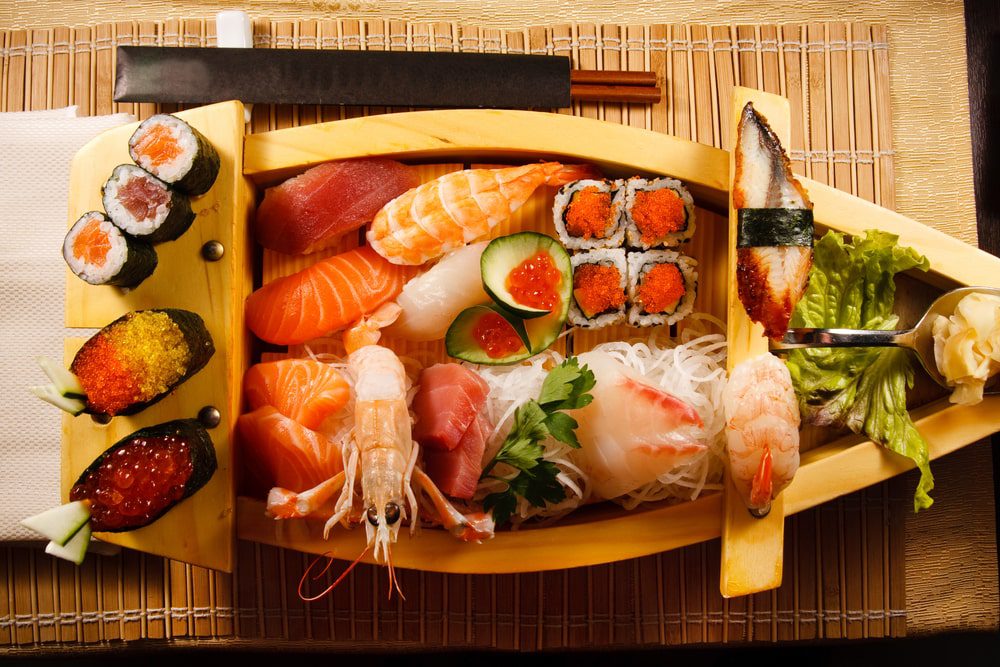Sushi and sashimi are two popular Japanese dishes that use raw fish as a key ingredient, but they differ in their preparation, ingredients, presentation, and taste. Sushi combines vinegared rice with raw fish and other ingredients, while sashimi is raw fish or seafood served without rice. Sushi often includes other ingredients like vegetables and fruits, while sashimi only uses raw fish or seafood. Sushi is typically presented in bite-sized pieces, while sashimi is served as thin slices arranged in a clean pattern. Sushi provides a burst of flavors with a satisfying texture, while sashimi highlights the pure flavor and delicate texture of raw fish.
Sushi vs. Sashimi: The Battle of Japanese Delicacies
Japanese cuisine is famous for its delicacies that cater to different palettes. Two of the most prominent Japanese dishes are Sushi and Sashimi, which are enjoyed by millions worldwide. Although both use raw fish as the main ingredient, they have different methods of preparation, presentation, and taste. Let’s dive into the battle of Sushi vs. Sashimi and explore their differences.
Method of Preparation
The most significant difference between Sushi and Sashimi is their method of preparation. Sushi is a dish that combines vinegared rice with raw fish, vegetables, and sometimes fruits, while Sashimi is a dish entirely made up of raw fish or seafood. Sushi chefs use different techniques to prepare the rice, such as boiling, steaming, or cooking it in a rice cooker. After that, they season the rice with rice vinegar, salt, and sugar to give it a sweet and sour flavor. On the other hand, Sashimi is carefully sliced raw fish, and no rice or other ingredients are used.
Ingredients
Although both dishes primarily feature raw fish, they differ in the choice of ingredients. Sushi chefs use a variety of ingredients like avocado, cucumber, crabstick, omelet, and more, to create different types of sushi rolls. Traditional sushi includes raw fish like salmon, tuna, yellowtail, eel, and many more. In contrast, Sashimi only uses raw fish, octopus, shrimp, and other seafood. Both dishes require high-quality ingredients, and the flavor and texture of the fish make a significant difference in taste.
Presentation
The presentation of Sushi and Sashimi plays a vital role in their appeal. Sushi is presented in bite-sized pieces that are easy to handle and eat with chopsticks. The sushi chef shapes the rice and fish into rolls or Nigiri, which is a slice of fish served on top of a small mound of rice. The chef may decorate the sushi with colorful ingredients like tobiko or sesame seeds. In contrast, Sashimi is presented as thin slices of fish or seafood arranged in a clean and simple pattern. The dish is often served with slices of ginger, wasabi, and soy sauce on the side.
Taste and Texture
Ultimately, the flavor and texture of Sushi and Sashimi are what sets them apart. Sushi provides a burst of flavors in every bite, with the rice and ingredients complimenting the raw fish. The rice used in sushi gives it a more filling and satisfying texture, making it a complete meal in itself. The raw fish used in Sashimi is the star of the dish, allowing you to taste the pure and delicate flavor of the fish. Sashimi has a buttery texture and melts in your mouth, providing a unique sensory experience.
Conclusion
Both Sushi and Sashimi offer unique experiences for Japanese cuisine lovers. While they share some similarities, they differ in preparation, ingredients, presentation, and taste. Sushi is often seen as a complete meal, while Sashimi is a more delicate and straightforward dish, meant to highlight the taste of raw fish. Choosing between Sushi and Sashimi comes down to personal preference and mood. Sushi is perfect for a fulfilling meal, while Sashimi is an ideal choice for an elegant and light dish.
